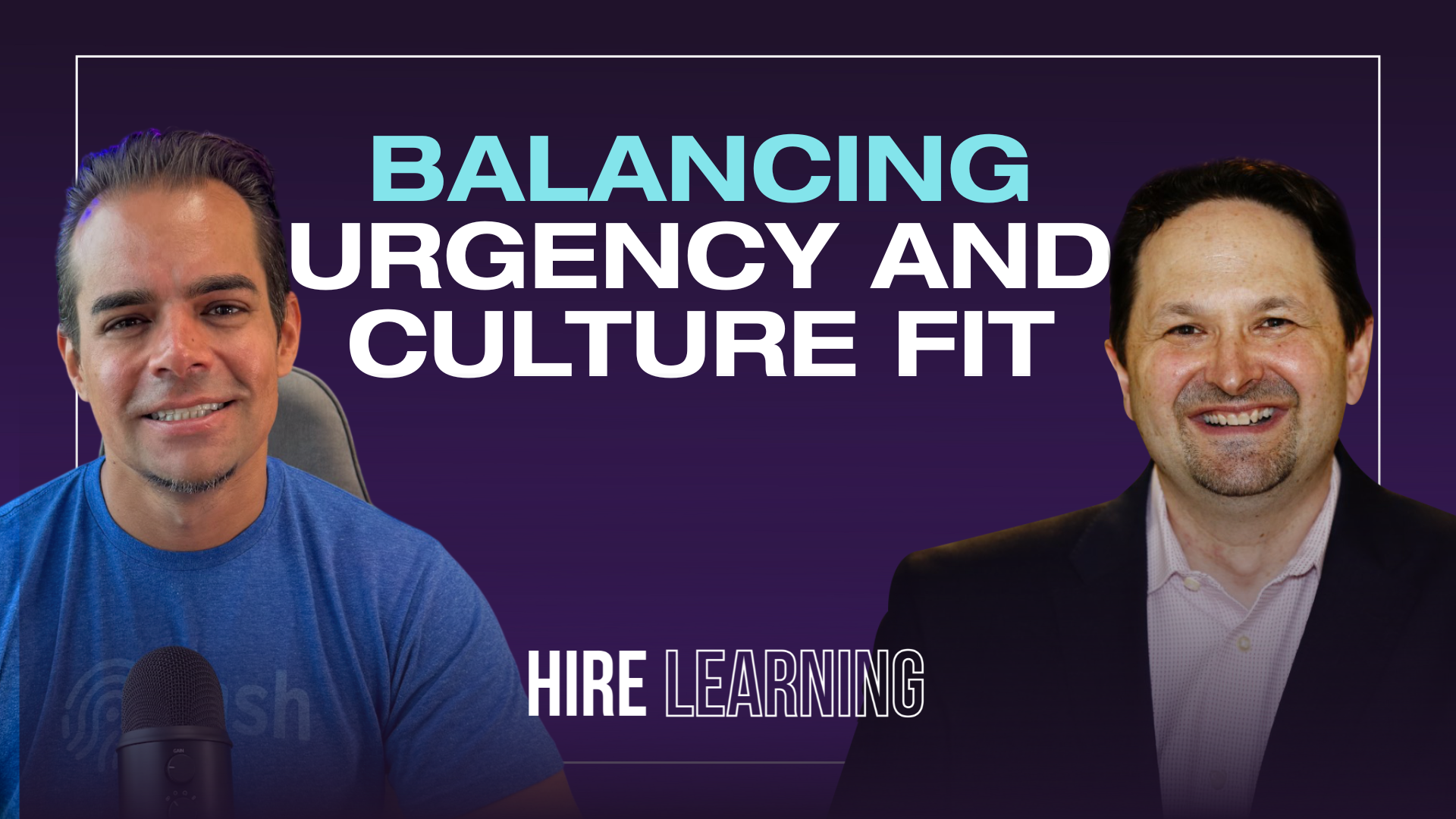It’s hard enough for regular folks to balance their work and personal lives, let alone physicians.
With demand rising due to an aging population and a shortage of full-time equivalent (FTE) physicians—we’re talking about a deficit of nearly 140,000 by 2036—many physicians are overworked, burned out, and barely hanging on.
So when the hiring team at a healthcare organization, whether a small private practice or a large hospital, wonders how to hire a physician (or multiple), it can get tricky.
It’s competitive, and there are numerous considerations to take into account. From culture fit to specialization, how can you identify the right candidate, win them over, and retain them for the long term?
Below, we’ve compiled several best practices to help your healthcare organization achieve all its hiring goals in 2026 and beyond.
By adopting them, your hiring team will be able to attract and retain top-tier physicians who’ll improve your patient care and contribute to your organization’s ongoing success—all while your new hires avoid burnout and enjoy high job satisfaction too.
But first:
-------------------------------------
Get Your Copy Of Our Healthcare New Employee Onboarding Checklist
--------------------------------------
Got it? Okay let's continue.
Costs Of Short Term Thinking When Hiring
One of the most important things to keep in mind as your team begins the process of hiring a physician is the need to cultivate and maintain a long-term mindset. Short-term thinking can lead to significant costs and long-ranging repercussions for healthcare organizations.
If you don’t hire new physicians who align with your organization’s long-term strategic goals, there may be negative consequences, such as:
- High turnover that disrupts patient care
- Repeated recruitment and training expenses
- Poor team dynamics
- Lower staff morale and less collaboration
- Stalled growth and innovation
Furthermore, short-term hires may lack commitment to the community, resulting in a transient workforce that undermines patient trust and satisfaction.
To mitigate these risks, it’s important to adopt a strategic, long-term mindset from the outset. This involves clearly defining the qualities and skills needed for sustained success, prioritizing cultural and value alignment, and considering the potential for professional growth within the organization.
Engaging in comprehensive workforce planning will ensure that hiring decisions support both immediate needs and future objectives, helping your organization maintain a stable and motivated team. By valuing long-term fit over quick fixes, you can build a resilient and unified group of physicians who truly care about your patients and your organization’s ongoing success.
Key Considerations For Identifying Your Ideal Candidates
How should your hiring team go about narrowing its talent pool to create a shortlist of top candidates? Several key considerations can help streamline this process, including alignment on:
Organizational Goals
Start by verifying that your ideal candidate shares the same objectives, vision, and values as your healthcare organization. This might include expanding service lines, improving patient care quality, or advancing research initiatives.
During the hiring process, ask about the candidate’s professional aspirations and consider how they align with your institution’s long-term plans. Physicians who are committed to the same goals will be more likely to contribute meaningfully and show a higher level of job satisfaction.
Discuss your strategic objectives openly while you interview candidates, and look for those who demonstrate a genuine interest in helping you achieve those goals.
Specialization Needs
It’s also crucial to consider if the candidate’s specialties match your organization’s immediate and future needs. Do you need a cardiologist? A neurologist? How about an oncologist? Consider your current patient demographics, prevalent health issues, and service gaps to determine which specializations are needed in your facility.
Tailoring your recruitment efforts to attract physicians with the necessary expertise will help your organization meet patient demand and position itself as a leader. This targeted approach will help you build a well-rounded medical team that can effectively address diverse patient needs
Culture Fit
It’s incredibly important to nail culture fit when choosing the right doctor to hire. When a physician seamlessly fits into the culture, both parties benefit from the following:
- A positive and productive work environment
- Increased collaboration
- Improved job satisfaction
- Higher retention rates
To achieve this, assess each candidate’s values, work ethic, and personality to see if they match your organization’s culture. Use behavioral interview techniques and involve your other physicians in the selection process to determine how well they will integrate into your team.
Physicians who fit in with everyone will contribute toward a cohesive, productive, and supportive work atmosphere that benefits both staff and patients.
Physician Hiring Best Practices In 2026
Now that it’s evident why your hiring team should think long-term and take the above considerations into account, it’s time to explore several top recruitment strategies and best practices for physician hiring.
1. Prepare Well-Defined Internal Criteria
Start by outlining the qualifications, skills, and experiences necessary for the role, such as medical specialties, years of practice, and required certifications. Additionally, consider culture fit by defining the values and behaviors that match your organization’s mission and work environment.
Include soft skills like communication, teamwork, and empathy on your list. Also, ask key stakeholders, including your current staff and department heads, to confirm the criteria you’ve developed are on point and truly reflective of the position.
Clear, detailed criteria will guide the recruitment process and help your team identify ideal candidates to fill your roles.
2. Flesh Out Your Job Descriptions with More Than Surface-Level Insights or Templatized Phrases
Another piece of advice? Build out each job description to attract top talent. Begin by clearly articulating the role’s responsibilities, expected outcomes, and daily tasks to provide a realistic job preview. Next, highlight the unique aspects of your organization, including:
- The advanced technologies it uses
- Its collaborative culture
- Professional growth opportunities
Include detailed information about the types of patients your organization serves and its available resources. In addition, emphasize the benefits the physician can expect to receive once hired, like, for instance, competitive compensation, a healthy work-life balance, and access to career development programs.
Creating and distributing a comprehensive and authentic job description increases the likelihood you’ll attract an additional physician to your team who is genuinely interested in your organization’s values and goals.
3. Conduct Multiple Interviews with Physician Candidates
It’s good practice to interview promising candidates more than once so you can thoroughly evaluate them. Start with a preliminary phone or video interview to assess their basic qualifications and fit. This step helps eliminate bias before you move on in the process.
Next, follow up with several in-depth, in-person interviews that involve key stakeholders, such as department heads, peers, and senior leadership, to gauge the candidate’s clinical skills, culture fit, and bedside manner.
To fully understand their capabilities, include a mix of technical questions, behavioral assessments, and scenario-based discussions.
This multifaceted approach reduces the risk of hiring someone who doesn’t fit into the organization. It also provides diverse perspectives on the candidate’s suitability and increases the odds you’ll choose a physician who’ll work well in the long term.
4. Use a Hiring Experience Platform to Facilitate the Process
Don’t even think about using spreadsheets and other disjointed methods to keep track of your physician hiring—too confusing and disorganized! Instead, use a hiring experience platform like MSH’s Aeon to boost efficiency and improve the candidate experience.
Using a recruitment firm’s platform will streamline your hiring process by integrating job postings, application tracking, and communication into a single system. Features like automated scheduling, video interviewing, and real-time collaboration tools help manage and expedite the hiring process.
Additionally, data analytics can provide helpful insights into candidate sourcing and hiring trends, allowing for more informed decision-making.
5. Consider Both Qualitative and Quantitative Metrics
Take both quantitative and qualitative metrics into consideration when evaluating candidates.
Quantitative metrics include measurable factors like:
- Years of experience
- Certifications
- Patient volume
Qualitative metrics assess less tangible attributes like culture fit, communication skills, empathy, and teamwork abilities.
Consider using structured interviews, reference checks, and scenario-based assessments to gauge your candidate’s qualitative traits. Looking at both metric types will help you meet the role's technical requirements while still finding someone who shares your organization’s values and culture.
6. Build a Strong Onboarding Process
Once you’ve hired the perfect candidate, it’s imperative that your organization thoughtfully onboard them to set the stage for their long-term success. Begin by introducing them to your culture, policies, and procedures via a comprehensive orientation program.
Next, pair your new hires with experienced mentors who can provide guidance and support during the transition. Also, ensure they can access necessary resources, such as medical staff, administrative support, and technology tools. In addition, schedule regular check-ins to address any concerns and provide feedback.
Effective onboarding helps new physicians acclimate to their new work environment faster and boosts job satisfaction. Ultimately, a structured onboarding process, which can be handled by a recruitment firm like MSH, will increase retention rates and help guarantee that new hires are well-prepared to deliver high-quality patient care.
7. Create and Implement Long-Term Retention Strategies
Finally, remember to develop and execute retention strategies to maintain a stable and committed workforce. Strive to create a supportive work environment that values professional growth through continuous education, mentorship programs, and career advancement opportunities.
Your physicians will be very appreciative if you offer competitive compensation packages that include benefits and incentives that recognize and reward longevity and performance. They’ll also probably be absolutely delighted if your organization encourages a healthy work-life balance that provides flexible scheduling and wellness programs.
If your team cultivates a culture where your physicians feel valued and engaged because you provide regular feedback, recognition, and autonomy, your organization will be better able to retain top talent, reduce turnover, and ensure consistently exceptional patient care.
FAQS
- What is the average cost of hiring a physician?
The average cost of hiring a physician can range from $250,000 to $1 million, depending on various factors such as recruitment fees, relocation expenses, signing bonuses, and the length of the hiring process. This substantial investment highlights the importance of a strategic and thorough recruitment approach.
- How long does it take to hire a new physician?
Hiring a new doctor typically takes between six to twelve months, depending on factors such as the specialty, location, and thoroughness of the recruitment process. This duration includes time spent on sourcing, interviewing, and credentialing candidates.
- Is there software or any tools to help improve the physician hiring process?
There are several software tools and platforms designed to improve the physician hiring process, including applicant tracking systems (ATS), credentialing software, and specialized recruitment platforms like MSH’s Aeon. These tools streamline sourcing, tracking, and managing candidates, making the hiring process more efficient and effective.
Achieve Long-Term Success with Strategic Hiring Practices
Hiring the wrong person to fill your open physician role can be a costly mistake—to the tune of over $1 million—not to mention the negative impact on employee morale and the quality of patient care. There’s a lot at stake.
Fortunately, by following industry best practices and maintaining a long-term mindset, your team can avoid potential pitfalls and succeed in hiring an all-star physician (or multiple) who perfectly fits into your organizational culture.
Need a little extra help? The top talent acquisition experts at MSH are ready to support all your healthcare staffing needs. With their expertise and innovative solutions, including their AI-powered hiring experience platform, Aeon, MSH can streamline your recruitment process and connect you with top-tier physician talent so you can build a strong and capable medical team. Discover how MSH can transform your hiring strategy today!
.jpeg)
.png)

